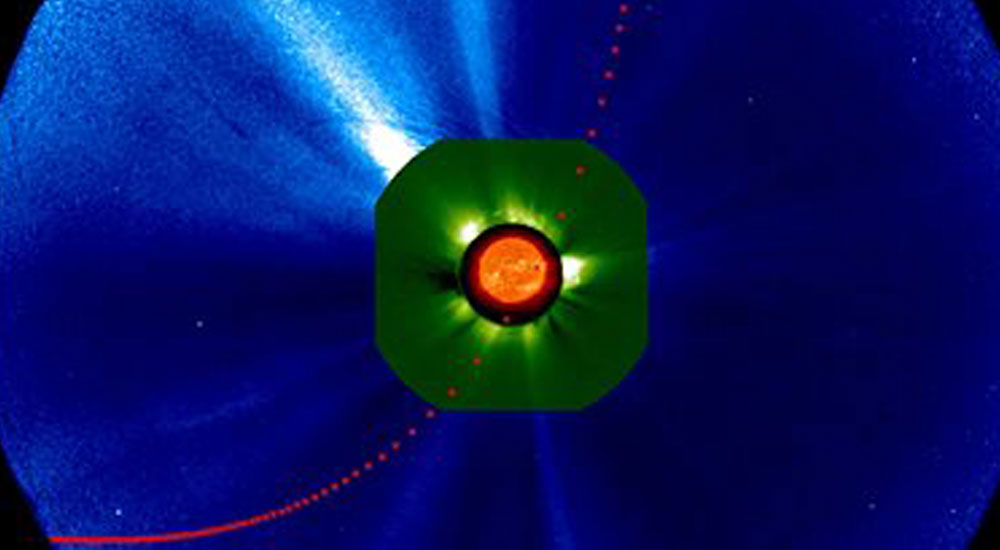‘Comet of Century’ may be seen in PH ‘if you know where to look’

A streaking ball of ice, dust and rock dubbed by some science journalists as the “Comet of the Century” will make its very first trip around the sun on Thursday, keeping astronomers on tenterhooks as to whether or not it will “sizzle or fizzle.” PHOTO FROM NASA.GOV
MANILA, Philippines—A streaking ball of ice, dust and rock dubbed by some science journalists as the “Comet of the Century” will make its very first trip around the sun on Thursday, keeping astronomers on tenterhooks as to whether or not it will “sizzle or fizzle.”
On Nov. 28, the comet “ISON” will appear very close to the sun on the sky’s dome, according to the monthly astronomical diary of the Philippine Atmospheric, Geophysical and Astronomical Services Administration (Pagasa).
“In November, ISON will pass very close to the bright star Spica and the planet Saturn, both in the constellation Virgo. These bright objects might help you find the comet,” Pagasa said.
It noted that “Comet ISON could become a daylight object,” meaning it might be visible across Philippine skies, but only to those who know where to look.
Comet ISON will appear about 4.4° north of the sun on Nov. 28. “Although the comet will be bright, it’s likely that only experts who know how to look near the sun, while blocking the sun’s glare, will see it,” Pagasa said.
It is, however, not advised to look directly at or near the sun without any protective gear in the hope of locating the comet, as this may damage the eyes.
The discovery of the comet is credited to Russians Vitali Nevski and Artyom Novinchonok, and it bears the name of their night sky survey program, the International Scientific Optical Network, Nasa said.
ISON is a group of observatories in 10 countries that have organized to detect, monitor and track objects in space, it said.
Catalogued as C/2012 S1, ISON was first spotted 585 million miles (941.5 million kilometers) away in September 2012, according to the US National Aeronautics and Space Administration (Nasa).
The comet, it said, will reach its closest approach to the sun on Nov. 28, “skimming just 730,000 miles (1.17 million kilometers) above the sun’s surface.”
“This is its very first trip around the sun, which means it is still made of pristine matter from the earliest days of the solar system’s formation, its top layers never having been lost by a trip near the sun,” Nasa said.
A time line of ISON’s “perilous and violent” journey is posted on Nasa’s website, in which it identifies scenarios that may occur when the comet approaches the sun.
“A comet’s journey through the solar system is perilous and violent. A giant ejection of solar material from the sun could rip its tail off. Before it reaches Mars … the radiation of the sun begins to boil its water, the first step toward breaking apart,” it said.
“And, if it survives all this, the intense radiation and pressure as it flies near the surface of the sun could destroy it altogether,” Nasa said.
But the prospect of ISON surviving its close encounter with the sun delights astronomers the world over.
“If it comes around the sun without breaking up, the comet will be visible in the Northern Hemisphere with the naked eye, and from what we see now, ISON is predicted to be a particularly bright and beautiful comet,” Nasa said.














